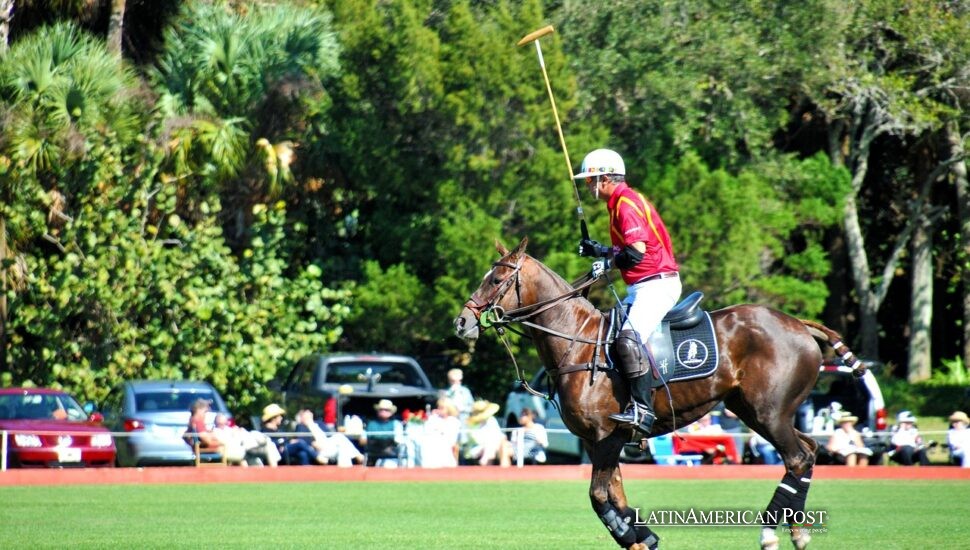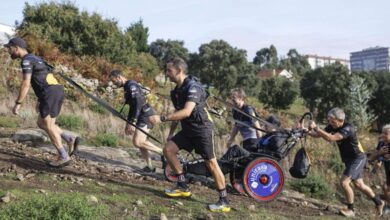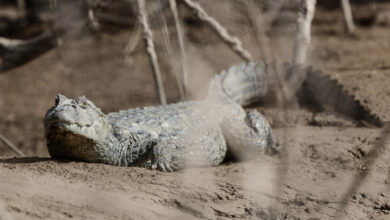Argentina Gene Editing Horses Elevates Polo's Future Ambitions Worldwide

A bold chapter in Argentine polo is underway with modern gene editing methods that shape faster or more athletic ponies. Scientists in Argentina now add science driven changes to equine DNA that will transform a game which relied on basic breeding. The research behind these modified polo horses opens questions about fair play along with medical concerns as well as shows what lies ahead for fans of the sport.
A Revolutionary Method Rooted in Tradition
Argentina’s storied polo heritage has traditionally relied on time-tested approaches to breeding. For decades, local estancias have refined bloodlines through generations, producing champion ponies renowned for agility and stamina. However, as global demand intensifies and competition grows ever more competitive, Argentine innovators are turning to CRISPR-based gene editing to achieve results that used to take decades.
In coverage reported by Reuters, scientists detailed how they extracted and modified specific genetic sequences from a renowned mare known for her explosive speed and resilience. The goal, they said, is to replicate her prized attributes more directly. In a normal setting, breeding might pass on half her genes, with an uncertain distribution of traits. Now, guided by advanced molecular tools, scientists target the exact segments they believe encode stronger or faster muscle composition. The result: an entirely new approach to forging champion stock.
This project gained immediate attention not only for its promise but also because it draws on Argentine polo’s reputation for excellence. Polo thrives in Argentina’s broad grasslands, nurtured by a long lineage of dedicated ranchers and horse trainers. The notion of blending that heritage with cutting-edge labs might appear startling, yet for many supporters, it’s the logical next step in a tradition that has always prized the best. By refining nature’s processes in a precise manner, these researchers aim to compress what might take generations into a single, transformative cycle.
So far, the scientists have told Reuters that five foals have been born under this protocol, each carrying gene edits that enhance their chances of matching or surpassing the champion mare’s performance. Like all foals, they still require dedicated training, specialized diets, and consistent handling to flourish. No matter how meticulous the gene editing, environmental factors also shape a horse’s success. Still, the innovators believe they can tilt the odds more favorably than any conventional breeding plan.
Harnessing CRISPR and the Science of Speed
While gene editing remains a complex realm, the underlying principle revolves around modifying the horse’s DNA at precise spots associated with traits like muscle fiber density or lactate metabolism. With CRISPR, scientists effectively “cut and paste” strands of DNA to emphasize certain attributes. By applying these techniques to ponies that have proven their worth on the field, the project leaders say they are capturing a performance “blueprint” from a champion, then reproducing it across multiple offspring.
In their interviews with Reuters, they stressed that these modifications do not introduce foreign genes. Instead, they rely on sequences found within equine genetics, possibly rearranged or emphasized in ways that accelerate nature’s selective processes. As a result, regulators in Argentina currently do not regard these foals as genetically modified organisms in the traditional sense. The scientists liken the process to speeding up normal breeding: had the mare reproduced enough times with carefully selected stallions, the same genetic combos might naturally arise. This approach merely assures they happen at once.
One aspect of CRISPR-based editing that grabs attention is muscle composition. For a polo pony, explosive bursts of speed are critical, particularly in short sprints across the field. If the genes that govern fast-twitch muscles can be heightened, a horse might be able to accelerate more powerfully. Observers, however, caution that too great a focus on speed could compromise aspects like durability or temperament. Those behind the project claim they are balancing multiple factors—like conformation and stamina—to shape a well-rounded athlete.
Still, the novelty of gene editing means relatively little real-world data exists on how these traits manifest under the stress of daily training or top-level matches. Even the best genealogical plan can falter if the environment proves challenging or if unforeseen side effects emerge. The project leaders are acutely aware that success depends on rearing these foals in the right environment, ensuring the new genetics truly complement the physical, mental, and social training all competition ponies require.
Voices Of Debate: Ethics And Sporting Fairness
In Argentina, the fusion of old customs and modern science sparks different opinions. A group of advocates considers this the highest form of the nation’s quest for excellent ponies and proof of how research connects with time-tested horse knowledge. These experts view such developments as a normal step in the long search to create very capable polo mounts. However, several critics express doubts about this extensive genetic work, which could affect fair play – particularly if these special steeds gain too much advantage over regular horses.
The debate echoes broader global conversations around genetically edited organisms. Are gene-edited ponies akin to doping in sports, or is this a sophisticated extension of the selective breeding that breeders have pursued for centuries? Those behind the program argue that doping implies introducing artificial substances to an animal, whereas gene editing leverages only the existing equine genetic toolkit—just arranged more deliberately. They add that, for now, regulations in Argentina and some other regions do not classify these horses as doping or genetically modified organisms.
The question of acceptance, though, is far from settled. Polo is a sport steeped in lineage and prestige; each stable carefully curates its lines, producing foals in a tradition that some see as near-sacred. Could gene editing chip away at the romantic mystique that sets polo ponies apart from thoroughbreds used in simpler track racing? As with any pioneering technology, it may take years for the equestrian community to settle on standards that satisfy breeders, players, spectators, and regulators. In the meantime, participants watch anxiously to see if gene-edited foals begin to dominate or if the resulting animals prove no more formidable than existing lines.
From an ethical vantage, critics also fear a slippery slope: if perfecting speed is acceptable, what about engineering docility or reactivity to commands? Could moral boundaries fade if researchers attempt to alter mental qualities or looks? The project directors pledge to focus solely on athletic abilities much like traditional breeding goals. A more precise pathway to capture a winner’s core traits exists through CRISPR methods. However, public acceptance of these promises will depend on how well the young horses perform in official competitions.
Where Innovation And Tradition May Converge
Despite the heated debates, the broader polo community in Argentina appears more curious than hostile. Local ranchers remain watchful, drawn by the promise of forging a champion line with fewer missteps. The substantial investment required to develop or obtain a gene-edited horse suggests only a narrow segment of wealthier breeders can join in. Still, if these early successes bear fruit, demand could spread to major polo stables worldwide, from England to the United States to the Middle East, each vying for the competitive edge.
As the gene-edited foals grow, the scientists who spoke to Reuters believe they can track subtle differences in muscle fiber arrangement, lung capacity, or recuperation time after intense gallops. A thorough check will determine if these young horses match their record-breaking mother’s skill, which could spark major attention. Several stables will line up to adopt the method or prompt officials to revise rules about doping next to genetic changes in horse competitions.
The debut race of the initial gene altered pony marks a potential change in horse racing. A remarkable performance that surpasses competitors or clinches prestigious competitions would make horse owners accept such methods. But lackluster results as well as health issues would send the racing community back to customary breeding practices. Some experts predict a middle path: the technology will expand but remain regulated, leaving room for authenticity while allowing incremental, data-driven refinements in breeding.
Even with the tension, many in Argentina glean pride from this project— to them, it reaffirms the country’s status as a vanguard of equine innovation. Already renowned for producing horses that define polo’s upper echelons, Argentina has proven again that it’s unafraid to push boundaries. If these newly conceived ponies flourish, the combination of Argentine craftsmanship and modern genetic ingenuity may produce a stable of unstoppable animals that enthrall fans. And if, at the same time, breeders uphold respect for the animals’ welfare and preserve polo’s essence, the synergy could represent a formidable leap forward.
Also Read: Costa Rican Alajuelense Challenges FIFA Over Cup Rules
Before that dream can become a reality, numerous foals must train, remain free of health issues, and adapt to the demands of competitive polo. Even the most capable horse relies heavily on a skilled rider for direction— a nuance that no gene editing can replace. So, while the scientific team has done its part, the final test will play out on the grass fields, among galloping hooves, thundering mallets, and the intangible bond between pony and player, whether champion or disappointment, the story of these gene-edited animals hints that the grand tapestry of polo is about to add a startling new thread.




